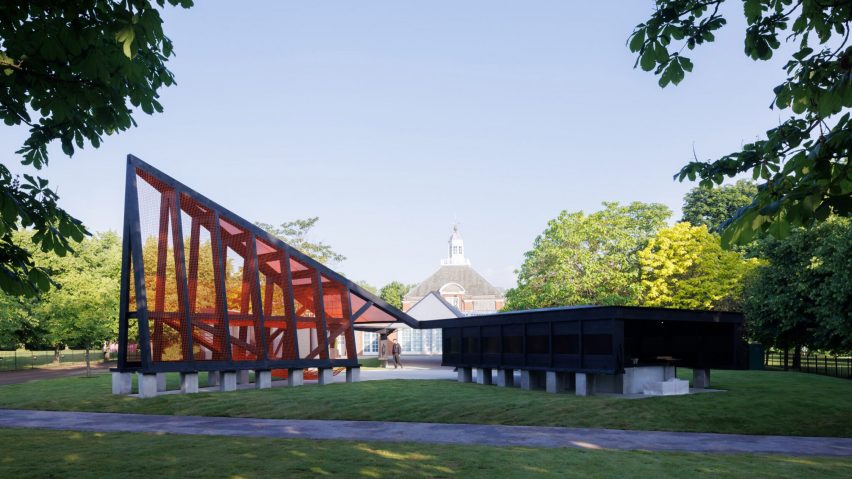Architect Minsuk Cho has created a star-shaped shelter organised around a circular void, informed by courtyards of historic Korean houses, as the 2024 Serpentine Pavilion.
Situated in central London's Kensington Gardens, the pavilion named Archipelagic Void comprises five structures – or "islands" – each serving different functions.
In contrast to pavilions from previous years, which have often taken the form of a central singular structure, Cho aimed to create numerous forms around a central, open space.
"Many of these greats that I admire so much – artists and architects – over the past 22 editions have explored ways of bringing people together – a form of generosity through architecture," Cho said. "In our case, a way to bring together was to provide many choices."
Built largely from natural timber sourced from Surrey, the pavilion's five structures feature varying sizes, heights and forms and are each supported by raised concrete plinths that extend outwards to provide built-in seating.
The structures are also connected at their roofs by a circular steel ring that mimics the shape of the courtyard below.
"The majority of it is a complete, condensed, compressed geometry," Cho told Dezeen. "And then so there's this really concentrated, overused part in the middle."
"It was not being just oppositional, but it was more about the complimentary act, more about balancing it [so] that maybe we can leave out the centre as [the] most used part as a void," he added.
The largest of the five structures is the Auditorium, which is designed as a space for public gathering, performances and talks. It is topped with an angular pitched roof and lined with translucent, pink-hued polycarbonate openings.
Situated on one side of the Auditorium is The Library of Unread Books by artist Heman Chong and archivist Renée Staal, which is held within a smaller structure filled with shelves and tapered at its rear.
The Gallery, situated on the Auditorium's other side, is a similarly small structure with translucent polycarbonate openings that contains a sound installation playing music by composer Jang Young-Gyu.
The tallest of the five structures is the Play Tower – a pyramidal timber structure fitted with orange netting for visitors to play in – while the fifth structure, named the Tea House, contains a cafe.
Cho is most well-known as the co-curator of the Golden Lion-winning Korean pavilion exhibited at the Venice Architecture Biennale in 2014.
He is also the founder of Mass Studies, with previous projects by the studio including the Republic of Korea Pavilion at Shanghai Expo 2010 and the Songwon Art Centre.
Commissions for the Serpentine Pavilion have been running since 2000 when the late Zaha Hadid designed the first pavilion. The event provides a platform for international architects to design their first building in the UK.
The year's pavilion by Cho forms the event's 23rd pavilion and is open to the public from 7 June. Previous pavilions include Lina Ghotmeh's circular timber pavilion in 2023 and Theaster Gates' Black Chapel in 2022.
The photography is by Iwan Baan, courtesy of Serpentine Galleries, unless stated otherwise.

